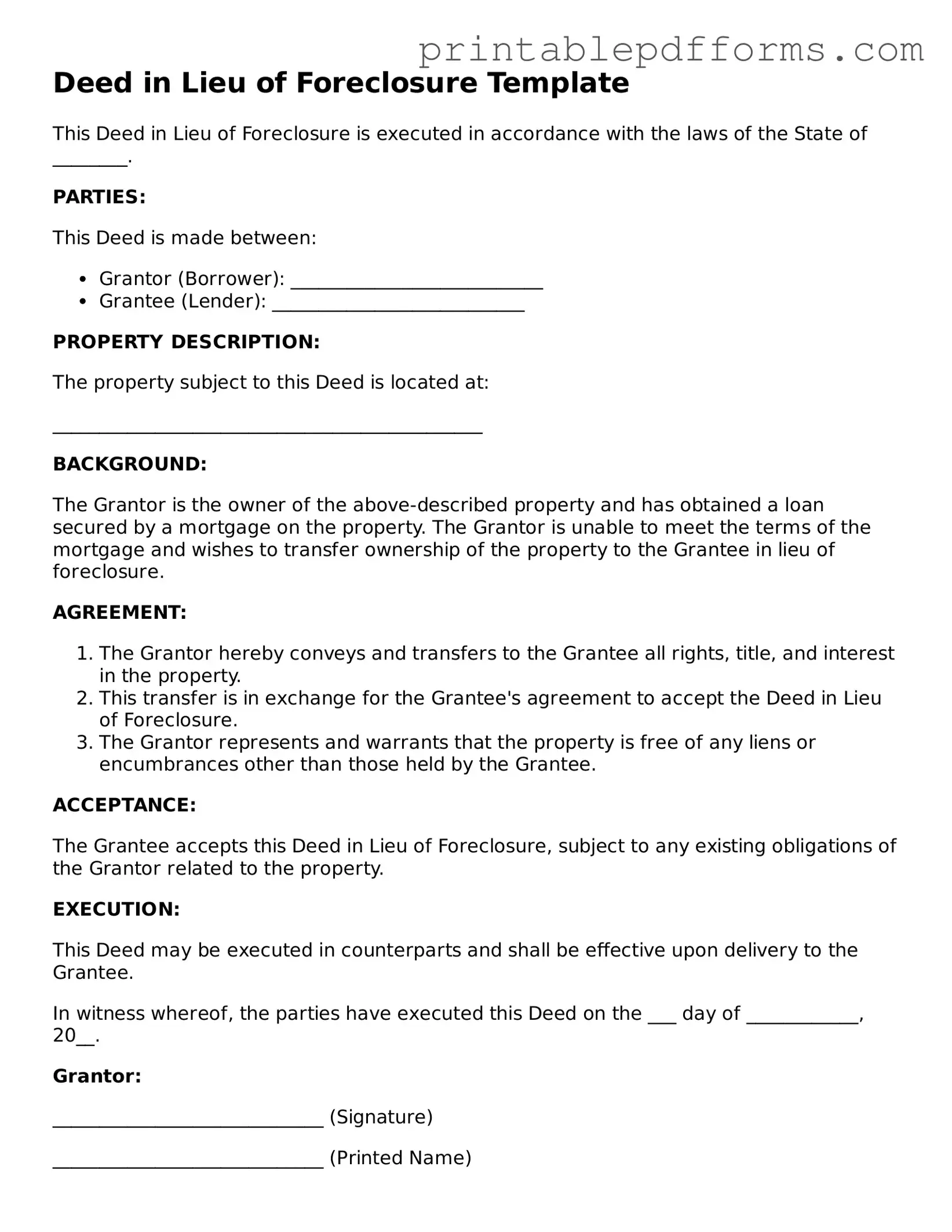Deed in Lieu of Foreclosure Template
This Deed in Lieu of Foreclosure is executed in accordance with the laws of the State of ________.
PARTIES:
This Deed is made between:
- Grantor (Borrower): ___________________________
- Grantee (Lender): ___________________________
PROPERTY DESCRIPTION:
The property subject to this Deed is located at:
______________________________________________
BACKGROUND:
The Grantor is the owner of the above-described property and has obtained a loan secured by a mortgage on the property. The Grantor is unable to meet the terms of the mortgage and wishes to transfer ownership of the property to the Grantee in lieu of foreclosure.
AGREEMENT:
- The Grantor hereby conveys and transfers to the Grantee all rights, title, and interest in the property.
- This transfer is in exchange for the Grantee's agreement to accept the Deed in Lieu of Foreclosure.
- The Grantor represents and warrants that the property is free of any liens or encumbrances other than those held by the Grantee.
ACCEPTANCE:
The Grantee accepts this Deed in Lieu of Foreclosure, subject to any existing obligations of the Grantor related to the property.
EXECUTION:
This Deed may be executed in counterparts and shall be effective upon delivery to the Grantee.
In witness whereof, the parties have executed this Deed on the ___ day of ____________, 20__.
Grantor:
_____________________________ (Signature)
_____________________________ (Printed Name)
Grantee:
_____________________________ (Signature)
_____________________________ (Printed Name)
